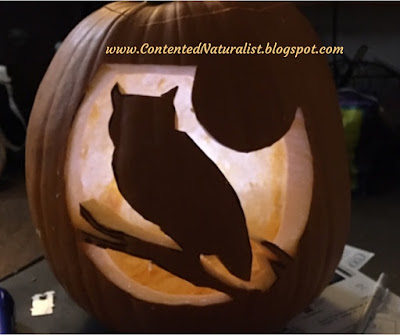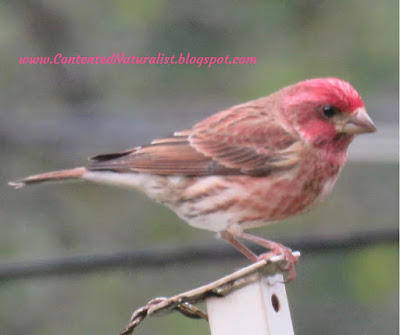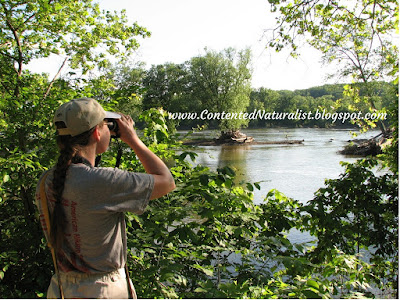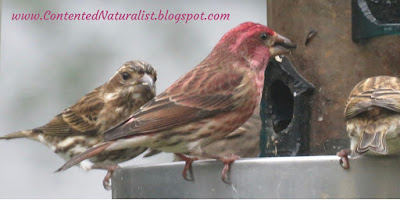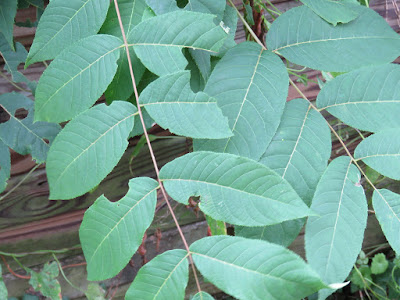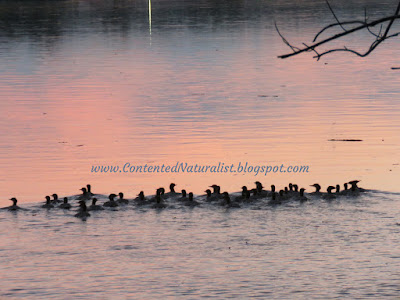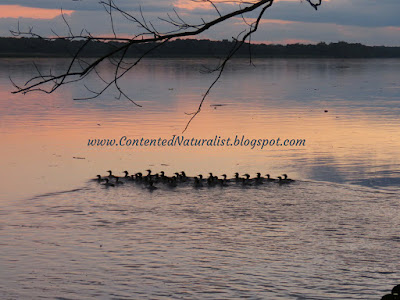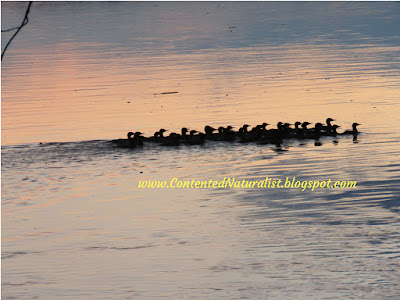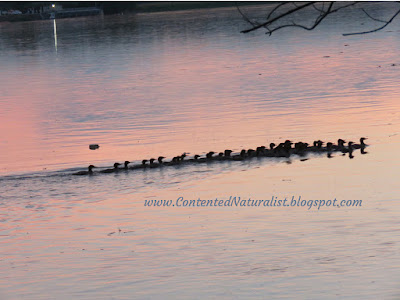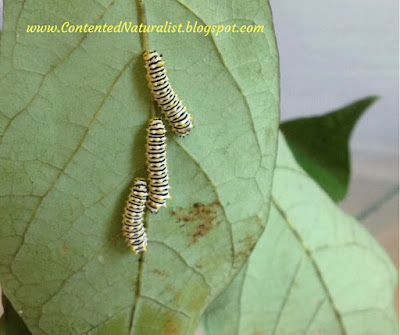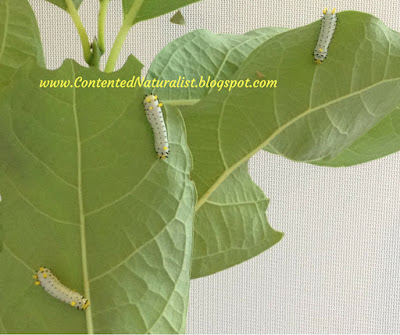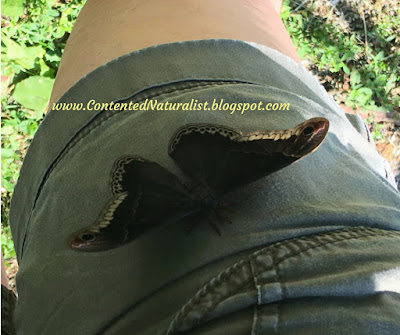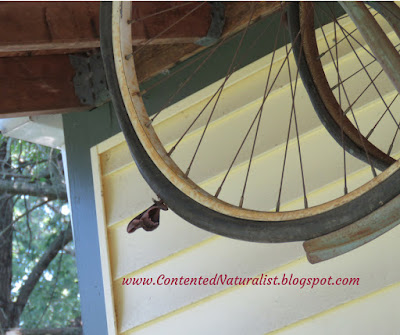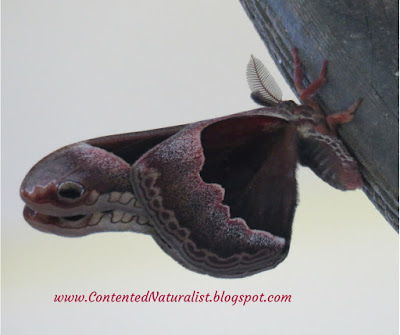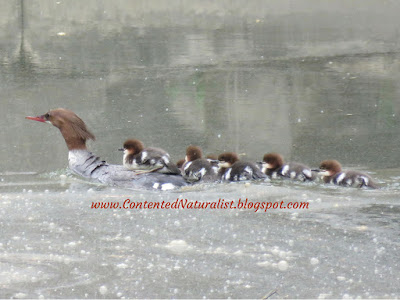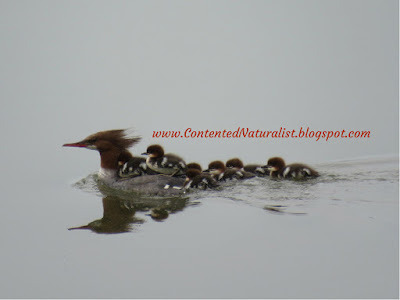 |
| Some of the birds in my front yard a few years ago, including a leucistic finch. I grew lots of beans that year, as you can see in the background. |
If you feed the birds, do you have your feeders in your front yard, your back yard, or both? What kind of shelter is available nearby? Do you grow plants specifically for the birds, or leave plants standing in the fall so birds can still use them? If you want to improve what you offer for wild birds in your yard, a good place to start is looking at what kind of shelter they can find.
In general, you want your yard to feel safe in order for wildlife to come inhabit it. So the more branches you have for birds to perch on, or tangled vegetation for them to hide in, the safer birds are likely to feel in your yard. In theory, that should lead not only to more birds at your feeders, but hopefully also a wider variety of birds showing up in your yard.
 |
| Indigo Buntings live in open woodlands, so if you live close to a forest, adding shrubs and bushes to your yard might get one of these beauties to come visit you. |
I currently have my bird feeders in our front yard instead of our back yard. I do this because my home office faces the front yard, so that’s where I usually do my feeder watching in the mornings. The front yard also gets more sunlight than the back, so I can grow lots of native plants near my birdfeeders. The plants provide extra food, like I wrote about in this post, and also provide cover and shelter for the birds.
 |
| Female Purple Finch really blends in among the Ironweed seedheads. She seemed pretty content munching on those seeds too. |
While having the feeders in the front is convenient to watch, it also gives me somewhat of a disadvantage. Pedestrian and car traffic often goes by on the road there, so the birds may be startled away from eating. Also, the very thing that helps me garden in the front, that no trees loom overhead to shade out the sun, might also make little birds feel in danger from a hawk’s overhead attack.
 |
| Red-tailed Hawks are common in my area, and would definitely be a threat to my feeder birds. |
 |
| In the winter we also see Cooper's Hawks like this one. It wasn't very clever at hunting, though-- it sat right out in the open, probably wondering why no more birds were coming to the suet feeder. |
So recently I’ve wondered if I might see more or different birds, if I had my feeders in the back yard instead. A large maple tree shelters most of the yard there, joined by a couple small cherry trees, a white mulberry, and other shrubs, plus the large oak tree growing next door. All this provides a wide variety of cover for birds. There’s also the log pile shelter over in the corner that I built a year or two ago and described in this post. Basically, the back yard habitat is older and wilder than the front yard. My gardening efforts in the front are much newer, it's only been a few years since I turned a grassy lawn into garden beds.
This winter I’m going to run a little experiment, by putting additional feeders in the back, and see what shows up there compared to the front. My first back yard feeder has been up for a few days, and I don’t think the birds have tried it yet. The squirrels, of course, discovered it at once. I better make some more squirrel baffles for the back yard! I’ll keep track of my front and back yard birds this winter, and post an update in a few months.
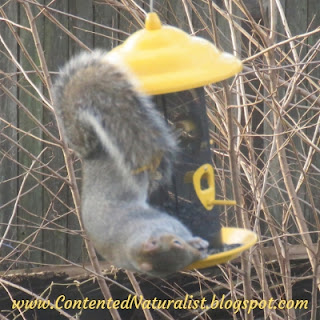 |
| At least the new bird feeder is all metal, so I don't have to worry about chewing damage. Darn squirrels! |
As you think about garden plans for next spring, consider adding a couple bushes or shrubs to help wild birds feel safer there. My next-door neighbor’s evergreen holly hedge is always full of talkative little House Sparrows. You can even consider plants that will give your yard “winter interest”—that is, plants with interesting seedpods, bright berries, or colorful bark, so when the leaves all fall you still have something to look at. Those seedpods and berries can also provide more food for the birds, of course! A few shrubs you and the birds might enjoy are redtwig dogwood, whose bare red bark looks pretty against the snow, and native Winterberry holly, whose scarlet berries are very attractive once the leaves fall. Dried native grasses and their seedpods can be very pretty too.
If you add some extra shelter for your birds, let me know how it goes!
 |
| Carolina Wren |




